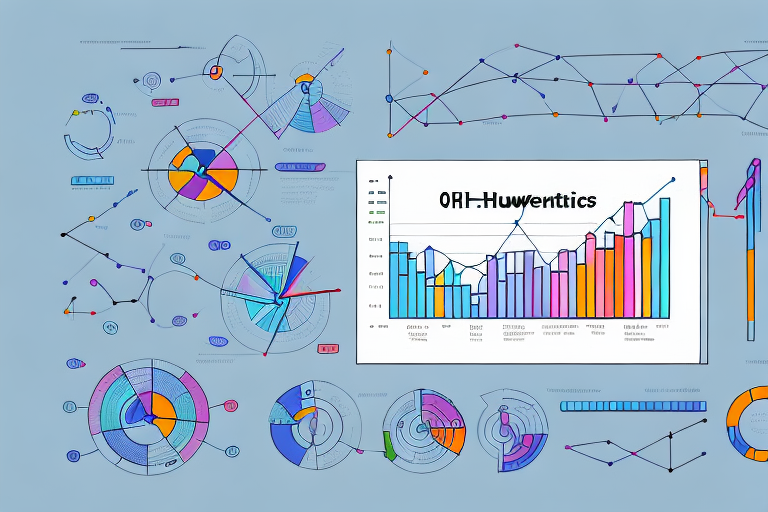How to Calculate Employee Retention Rate
In today’s competitive job market, together with employee turnover rate, employee retention has become a critical concern for organizations.
The ability to retain valuable talent directly impacts a company’s productivity, profitability, and overall success. To effectively measure and manage employee retention, it is crucial to understand and calculate the human resource retention rate.
In this article, we will delve into the significance of retention rates, the calculation process, interpreting the results, factors affecting retention rates, strategies to improve them, and real-world examples.
1. Understanding the Retention Rate
1.1 Definition
Retention rate refers to the percentage of employees who remain with an organization over a specific period. It is a key metric used to gauge employee loyalty, job satisfaction, and organizational stability. A higher retention rate generally indicates a positive work environment, effective HR policies, and a better alignment between employee and organizational goals.
1.2 Importance
Retaining top talent is essential for several reasons. It helps reduce turnover costs, such as recruitment, training, and onboarding expenses. Moreover, long-term employees possess valuable institutional knowledge, contribute to a positive workplace culture, and improve customer satisfaction.
Understanding the retention rate allows organizations to identify areas of improvement and develop targeted retention strategies.
2. Calculating Retention Rate
To calculate the retention rate, we need to determine the number of employees who have stayed with the organization during a given period, as well as the number of employees at the beginning of that period. The formula for calculating the retention rate is as follows:
Retention Rate = (Number of Employees at the End of the Period / Number of Employees at the Start of the Period) x 100
2.1 Formula and Components
The retention rate formula consists of two primary components:
- the number of employees at the end of the period;
- the number of employees at the start of the period.
These figures are typically obtained from HR records or employee databases.
2.2 Example Calculation
Let’s consider an example to illustrate the calculation of the retention rate. Suppose a company had 500 employees at the beginning of the year and, at the end of the year, 450 employees remained. Applying the formula:
Retention Rate = (450 / 500) x 100 = 90%
In this scenario, the retention rate for the year is 90%.
3. Interpreting Retention Rate
3.1 Benchmarking
Interpreting the retention rate requires benchmarking against industry standards and historical data. A high retention rate compared to competitors signifies a favourable work environment and effective HR practices. Conversely, a low retention rate may indicate underlying issues requiring attention.
3.2 Impact on HR Strategies
Retention rate insights inform HR strategies and decision-making. High retention rates suggest successful talent management and engagement initiatives, while low rates indicate the need for improvement. HR teams can analyze the factors contributing to the retention rate and develop targeted interventions to address any challenges.
4. Factors Affecting Retention Rate
Several factors influence the retention rate within an organization. Understanding these factors helps identify potential areas of improvement. Some common factors include:
- Leadership and Management: Effective leadership plays a vital role in employee retention. Supportive managers who provide clear expectations, regular feedback, and growth opportunities foster employee loyalty.
- Compensation and Benefits: Fair and competitive compensation packages, including salary, bonuses, and benefits, contribute to employee satisfaction and retention. Ensuring that employees feel adequately rewarded for their contributions is essential.
- Career Development: Opportunities for professional growth and development are crucial for employee engagement and retention. Organizations that prioritize employee training, mentorship programs, and advancement opportunities have higher retention rates.
- Work-Life Balance: Promoting work-life balance through flexible schedules, remote work options, and supportive policies helps employees maintain a healthy equilibrium between work and personal life. This balance enhances job satisfaction and reduces burnout.
- Recognition and Rewards: Recognizing employee achievements and providing rewards for exceptional performance create a positive work environment. Recognition programs, employee appreciation initiatives, and incentives boost morale and increase retention.
5. Strategies to Improve Retention
Organizations can implement various strategies to enhance their retention rates. Some effective approaches include:
- Competitive Compensation: Conducting regular salary reviews and ensuring that compensation packages are competitive within the industry helps attract and retain top talent. Offering performance-based bonuses and incentives can further motivate employees to stay.
- Career Development: Providing ongoing learning opportunities, training programs, and clear career paths fosters a sense of growth and progression. Employees are more likely to remain with an organization that invests in their professional development.
- Work-Life Balance: Encouraging work-life balance through flexible scheduling, remote work options, and supportive policies promotes employee well-being and satisfaction. Creating a positive work culture that values work-life balance contributes to higher retention rates.
- Recognition and Rewards: Implementing recognition programs, employee appreciation events, and rewards for outstanding performance boosts employee morale and loyalty. Recognizing and rewarding employees for their contributions fosters a sense of value and belonging.
6. Case Studies and Examples
To further understand the practical application of retention rate calculations and strategies, let’s explore a few case studies and examples from different industries. These real-world scenarios provide insights into successful retention strategies and their impact on organizational outcomes.
7. Common Challenges
While organizations strive to improve their retention rates, they may encounter common challenges. Some of these challenges include:
- Competition for Talent: In a competitive job market, attracting and retaining skilled employees becomes challenging. Organizations must differentiate themselves through attractive employment packages and compelling work culture.
- Changing Expectations: Employees’ expectations and preferences evolve over time. Organizations must adapt to these changes by offering flexible work arrangements, growth opportunities, and tailored benefits packages.
- Employee Engagement: Disengaged employees are more likely to seek opportunities elsewhere. Maintaining high levels of employee engagement requires regular communication, feedback, and opportunities for growth.
9. Conclusion
Calculating and understanding the human resource retention rate is crucial for organizations to retain their top talent and drive long-term success. By accurately measuring and interpreting retention rates, organizations can identify areas for improvement, develop effective HR strategies, and implement targeted interventions. Factors such as leadership, compensation, career development, work-life balance, and recognition all play a significant role in influencing retention rates. Implementing strategies to improve retention, benchmarking against industry standards, and addressing common challenges contribute to creating a positive and engaging work environment. By prioritizing employee retention, organizations can foster loyalty, productivity, and organizational stability.
FAQs (Frequently Asked Questions)
- Q: How often should organizations calculate their retention rates?
- A: It is recommended to calculate retention rates on a regular basis, such as annually or quarterly, to track trends and identify any changes that require attention.
- Q: What is a good retention rate?
- A: The ideal retention rate varies across industries, but generally, a rate above 80% is considered favorable. However, it’s important to compare rates within the same industry and consider other factors like company size and demographics.
- Q: Can a high retention rate be a sign of stagnation within the organization?
- A: While a high retention rate can indicate employee satisfaction, it’s essential to ensure that growth and development opportunities are provided. Regular evaluations and feedback can help identify areas for improvement.
- Q: How can organizations measure the effectiveness of their retention strategies?
- A: Organizations can assess the impact of their retention strategies by tracking key metrics such as voluntary turnover rate, employee satisfaction surveys, and exit interviews to identify trends and areas for improvement.
- Q: Is retention rate the only metric to consider for employee retention?
- A: No, retention rate is just one metric. Other factors like employee engagement, career progression, and overall job satisfaction should also be considered when evaluating employee retention efforts.






